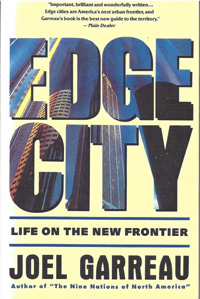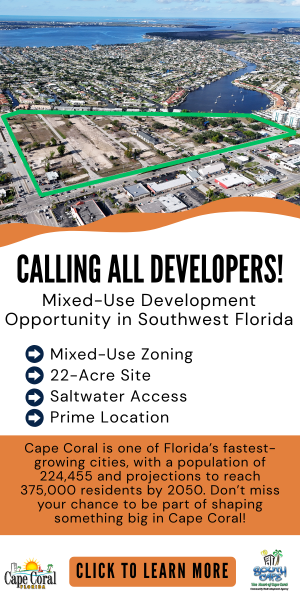Suburbs, Edge Cities and Santa Fe: A Conversation with Joel Garreau

The influential author sees the next boom towns emerging in smaller cities that are “urbane without the burdens of being urban.”
The status of the suburb has become a weathervane of American culture, criticized for its homogeneity and environmental impact, yet loved for its affordability and convenience. Joel Garreau’s modern classic “Edge City: Life on the New Frontier” (1991) explored the biggest revolution in 150 years in how the world builds cities, focusing on giant suburban office nodes and the development that grew up around them.
“Edge cities are typically freeway-hugging agglomerations of regional malls, business parks, hotels and the occasional rental apartment complex,” wrote Christopher B. Leinberger of George Washington University in the Summer 2018 issue of Development magazine. “They are dependent on cars and trucks as their primary or only transportation option. And they are where the vast majority of economic growth and substantial real estate development occurred in the late 20th century U.S.”
Development magazine recently sat down with Garreau to discuss the future of cities — edge and otherwise — on the 30th anniversary of his groundbreaking book. The conversation has been edited for length and clarity.
Development: Could you talk about the origins of your first book, “The Nine Nations of North America,” and how that led to “Edge City”?
Garreau: Back in the late 1970s, I was the national editor at the Washington Post responsible for all the reporters outside Washington, D.C. The conventional wisdom at that time was that the whole country had turned homogenous and bland and the same — including the built environment. It was all the same airports, all the same interstates. But when my reporters were out there trying to get a handle on the continent, we discovered that was not true at all.
There is no way that South Texas is anything like Maine. There is no way that Seattle is like Miami. Anyway, we ended up drawing on cocktail napkins to show boundaries that were real.
We used this originally as a news prediction device. But it resulted in the book called “The Nine Nations of North America.”
Ten years later, I had another one of these moments. I ended up living in Fauquier County, Virginia, which is about an hour west of Washington, in the foothills of the Blue Ridge Mountains.
I drove back and forth every day and started seeing office towers erupting along my commute, including in Tysons Corner. I thought, “What? This is not suburbia!” Anyway, it led to another epiphany.
I decided to get to the bottom of this because I had been taught in school that sprawl was bad. As a reporter, I needed to discover who is responsible for this and expose them! I mean, that’s what Washington Post reporters do, right?
So I started investigating, and one of the many things I discovered was that developers really cared about what they did. They carried pictures of these buildings around in their wallets like those of their children. They took them out and they showed them to me, and they felt passionate about their work. All they were doing was giving the American people what they demonstrably showed they wanted by that most reliable of measures — their willingness to pay for it.
So, I said, “OK, well, wait a minute. Why did they think they were just giving Americans what they wanted? What is it about Americans that made them think that this is right?” Anyway, one thing led to another, and that was the origin of my second book, “Edge City.”
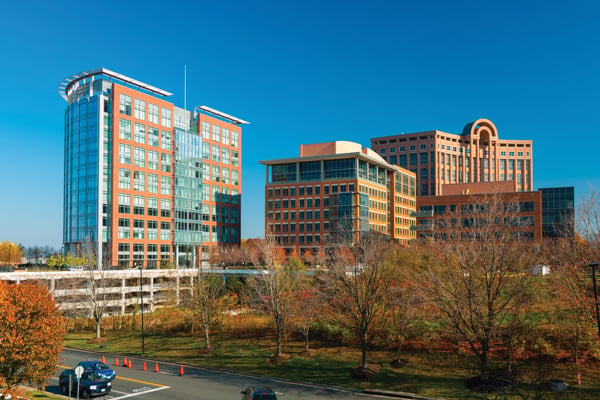
Joel Garreau’s prototypical Edge City is Tysons, Virginia, about 15 miles west of downtown Washington, D.C. At right is the Tycon Tower building. In “Edge City,” Garreau noted that locals had dubbed it “the World’s Tallest Shopping Bag” because of its location adjacent to two large malls, which are crucial components of Edge Cities. Getty Images
I discovered that Americans put an extraordinary value on individuality. They want to be able to live where they want, shop where they want and work where they want, all in unlimited combination. And if you do a spiderweb of those things, what you end up with is nodes at the intersection of transportation corridors.
I went to Coldwell Banker to confirm my hunch. In the late 1980s, it took four of their offices two weeks to generate these numbers. That’s when I discovered that, for example, Tysons Corner, Virginia, was the largest urban core between Washington and Atlanta, even back then, as measured by white collar jobs, using 250 square feet of office space per worker as a surrogate for that. The book identified 123 places in the U.S. that had all the functions that a major city had always had throughout history, and yet looked nothing like old downtowns. That was almost three times as many Edge Cities as there were downtowns of comparable size. These were not suburbs. They were their own “urbs.” Few had ever talked about these places as such.
Development: Some downtowns rebounded since your book came out, and many Edge Cities are struggling to stay competitive. For example, Tysons, the archetypal Edge City, is now adding housing, sidewalks and commuter rail. What’s next?
Garreau: What’s replacing Edge Cities and old downtowns is this new form of urbanity that’s as revolutionary now as Edge Cities were when they first started back in the ‘70s and ‘80s. They are so revolutionary that they’re dividing Edge Cities and the downtowns into the places that will survive and the places that will die. Because they’re going to have to compete with these new places.
The major thing is that these new places encourage novel experiences and face-to-face interaction in places far smaller and more charming and scenic than we’re used to seeing in anything so sophisticated. And they’re not suburbs. They’re typically far from major metros. If you can’t compete with that, you’re in trouble as a big urban center.
This is the biggest revolution in how we build cities since Edge Cities. It’s these places that are a lot like Santa Fe, New Mexico, and they’re erupting globally. They’re very different from the old-fashioned cities. Their big draw is that technology has allowed them to become urbane without the burdens of being urban.
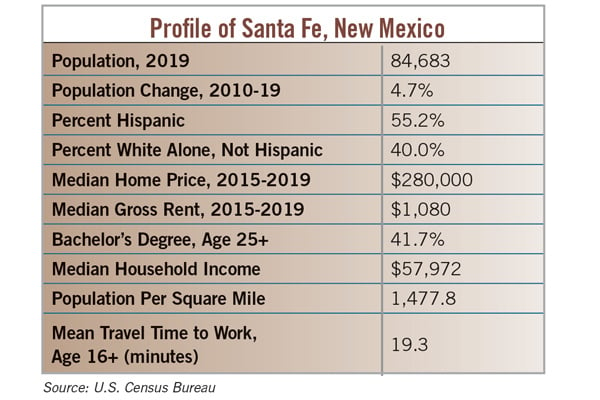
https://www.census.gov/quickfacts/fact/table/santafecitynewmexico/RHI725219
This is the opposite of suburbanization. This is not sprawl, this is aggregation — people coming together — and dispersion away from industrial-age places to human-scaled places. It’s people coming together, but to their ideal places.
As everything digital accelerates, these places are excelling at the one thing that you can’t digitize — face-to-face contact — that’s becoming more and more rare and valuable. We’ve discovered during the pandemic how stir-crazy you can get. Face-to-face is important. It’s critical to building trust, to falling in love, and often to having fun.
Santa Fe is the classic example of this phenomenon because it’s urbane. It has amazing world-class opera, charming architecture, distinguished restaurants — and great places to buy used boots, of all things! Quirky bookstores, mountains and diversity. And with a population of only about 85,000 people.
Development: What’s driving this?
Garreau: Cities throughout human history have been shaped by the state-of-the-art transportation technology at that time. If the state of the art is shoe leather and donkeys, what you get is Jerusalem at the time of Jesus.
Sixteen centuries later, the state of the art becomes horse-drawn wagons and ocean-going sail. All of a sudden you get cities like Amsterdam, or Boston, and they operate in entirely different ways.
Then railroads produce cities like Chicago. And later, the automobile results in places with multiple cores, like Los Angeles.
Then along comes the jet passenger plane. I will give you an example. In 1955, what was the southwestern-most major league baseball team in the United States?
Development: St. Louis?
Garreau: Very good! What happened is that you just simply couldn’t maintain a major league schedule if your team is located any farther southwest than St. Louis if you were moving the players by train.
But jets changed all that. They allowed the eruption of world-class metros in places that would not before have been practical — Dallas, Denver, Houston, Atlanta, Phoenix, Sydney, Beijing and so many others.
So, Edge Cities were a combination of the automobile and the jet plane — plus the corporate computer. Then, shortly after “Edge City” came out, the big boom was in the internet, which only a few people knew about when I wrote in 1991. The New York Times archives didn’t have more than a dozen references to it, if that. If they ever talked about the internet, it was about the bizarre way that scientists were talking to each other. That was the internet in 1991.
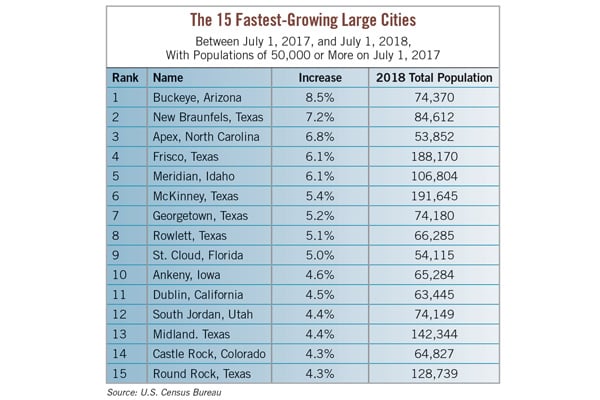
https://www.census.gov/newsroom/press-releases/2019/subcounty-population-estimates.html
Now, the internet is spurring these “Edge City 2.0’s” in places like Santa Fe, where people can get weapons-grade sushi delivered to them overnight and make six-digit incomes while being surrounded by interesting people and trout streams. But not just any remote place. People value natural beauty with remarkable face-to-face. You can see this in commercial real estate right now. Malls are dying, and office buildings are being converted into apartments. We really haven’t seen an old-fashioned Edge City like Tysons built from scratch in 30 years, and it’s because these Edge Cities are being replaced.
You could see this taking off over a decade ago. Wenatchee, Washington, was the fastest-appreciating real estate metro 15 years ago. It was just booming. I thought I knew this continent pretty well, but I had to look up where Wenatchee, Washington, is.
It turns out that Wenatchee is three hours east of Seattle, on the dry side of the Cascades, which explains a lot. Seattle’s full of people with great jobs, and Amazon, Microsoft, and the Gates Foundation, and all that. Yet it rains all the time.
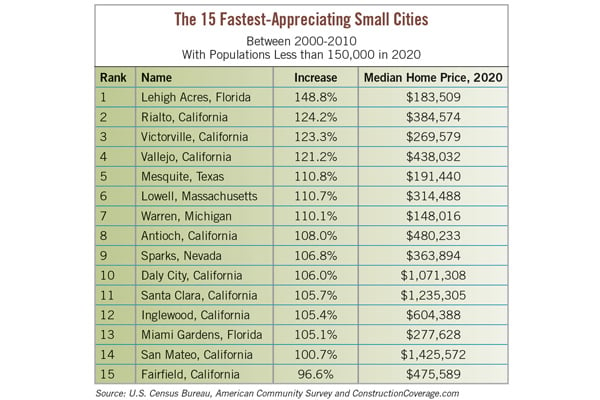
https://constructioncoverage.com/research/cities-with-the-largest-increase-in-home-prices-since-2010
Then, I discovered that Wenatchee has over 200 days of sunshine a year, and great skiing, and that it’s only three hours away. It was beautiful, enchanting and great for face-to-face, so folks would go there for the weekend and turn to each other and say, “Why are we leaving?”
When you see them arriving on Thursday and returning on Tuesday, that’s the revolution. At that point, they’re spending more time living and working in Wenatchee than they are in Microsoft’s Edge City in Redmond, Washington. To be clear, does this mean that we’re now lone eagles? That we’re abandoning cities? No. Humans are social animals. Solitary confinement is an extreme punishment, and humans love face-to-face. That’s the whole point of these new places that are similar in feel to Santa Fe.
Development: Is the supply of these places infinite? What do you see as the main constraints? An airport?
Garreau: That’s a really good question. I’m debating this, as I was back in the late ‘80s with the original Edge City concept, trying to figure out what the laws are. What are the rules? Yes, that was my first guess that the limiting factor was an airport. But I’m finding they’ll puddle-jump surprising distances if they love the place enough.
Consider South Jordan, Utah. It’s between the 10,000-foot-tall Oquirrh Mountains and the 11,000-foot-tall Wasatch range. It’s as if people are wanting something new, something beyond the patterns that had come before. That’s why these places are thriving.
Folks like concentrated, walkable real places that have evolved naturally. But they don’t want to live like pioneers. Think Monticello with broadband. These new places look nothing like sprawl. As I say, it means urbane, well beyond what we have ever thought of as urban.
So, weekend getaways that look and function like Santa Fe are becoming the new places where people and economies are moving.
Now, that doesn’t necessarily mean that Edge Cities and downtowns die. Again, face-to-face interaction is the critical element for any urban agglomeration, and some Edge Cities can pass the test, like Reston, Virginia, for example. That’s a good place for face-to-face interaction.
The point is, all these new places are the new competition. They’re occurring far beyond what we currently think of as a major metro. The premiums for these places is that they are not like Tysons.
Development: So the number of these places in the United States could be in the 50s or 100s? Have you settled on a definition of size or scope?
Garreau: With “Edge City,” I had a metric — office space as a surrogate for white-collar jobs. So, I got all that great data from the real estate industry and I divide by square foot per worker, and voila, that’s how many white-collar jobs that were there. You can debate whether 250 was the right number of square feet per job, especially as they moved to the cube farms. But it was the best available data.
Now, to do this now with these places, I suspect the most reliable surrogate would be to watch for the most explosive growth in tiny markets far from the majors. That’s what tipped me off to Wenatchee. Once the census had to recognize Wenatchee as a metro, the city would appear on the real estate industry’s list.
In any case, you do the best you can with the data you have, plus your own experienced eyeballs. You should look at the list of fastest-growing metros, fastest-appreciating metros, and what pops up are these places. The top 10 or top 20 just pop out as the “new Santa Fe’s.” Then go check them out.
In addition to Tysons, Virginia, other prominent Edge Cities include Century City in Los Angeles; King of Prussia, Pennsylvania; and the Research Triangle Park area near Raleigh, North Carolina.
Gerard C.S. Mildner. Ph.D., is an associate professor of real estate finance and
academic director at the Portland State University Center for Real Estate in
Portland, Oregon. Trey Barrineau is the managing editor of publications for NAIOP.
|
What Makes a Place an Edge City? Here’s how Joel Garreau defined an Edge City in his influential book, published 30 years ago this fall:
An Edge City:
|
About Joel Garreau
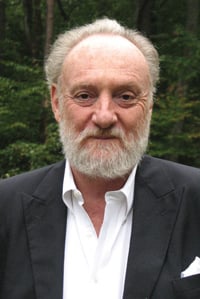
Joel Garreau is a former reporter and editor at The Washington Post who is currently the Professor of Culture, Values and Emerging Technologies, Emeritus College, at Arizona State University. He has been a fellow at The New America Foundation in Washington, D.C., an affiliate of The Institute for Science, Innovation and Society at Oxford, a Science Journalism Laureate at Purdue University, and a member of Global Business Network. He has also served as a fellow at Cambridge University, the University of California, Berkeley and George Mason University.


